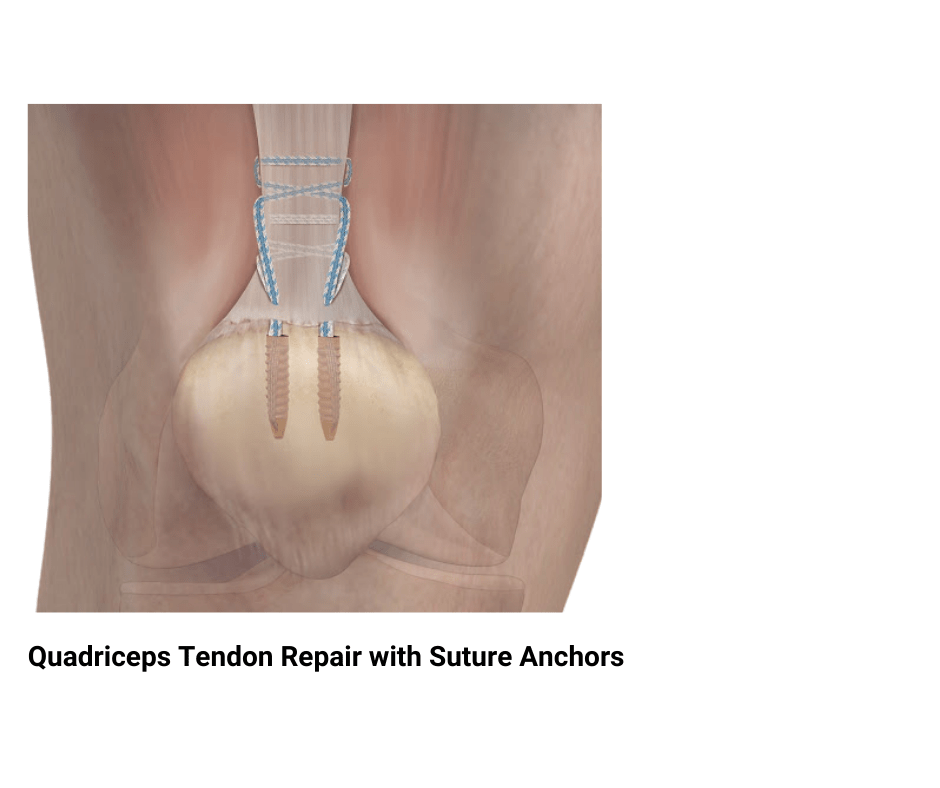What is it?
The quadriceps tendon inserts onto the top of the patella. This tendon, along with the patellar tendon and patella, comprise the extensor mechanism of the knee. These structures work together to increase the efficiency in straightening the knee. Quadriceps tendon ruptures are commonly seen in sports such as basketball, volleyball, and running.
What are the signs and symptoms of Quadriceps Tendon Rupture ?
Common symptoms of quadriceps tendon ruptures include:
• The knee suddenly giving out
• The kneecap
• An audible pop
• Pain and swelling
• Difficulty straightening the leg
Diagnosis
In the office, a complete history and physical exam is obtained. The knee is examined for any deformity or tenderness to palpation. Dr. Chang will assess if the patient can actively extend the knee. Imaging studies, such as an X-Ray, will confirm the kneecap to be shifted towards the shinbone.
Treatment
Conservative management of quadriceps tendon injuries can be performed in partial or incomplete tears. Accurate diagnosis is essential, as many patellar tendon injuries are complete ruptures. Patients are braced with the knee in extension for six weeks. Range of motion is then gradually permitted following this period immobilization.
Complete quadriceps tendon ruptures require surgical treatment. Quadriceps tendon repair is performed by suturing the torn tendon and securing it back to the patella with either bone tunnels or suture anchors. This procedure is typically performed in an outpatient setting under regional anesthesia, allowing patients to return home the same day.

RECOVERY
Following surgery, patients are placed in a long hinged knee brace for six weeks and are allowed to bear weight immediately (except in cases where there is a combined meniscus root repair or cartilage repair). Physical therapy begins within the first week of surgery. At six weeks, the brace is removed and the focus turns to regaining full range of motion and gait training. A jogging program is initiated about 3-4 months postoperatively, followed by an agility program at 5-6 months. Sport specific drills are then initiated and patients generally return back to their sport around nine months postoperatively.
